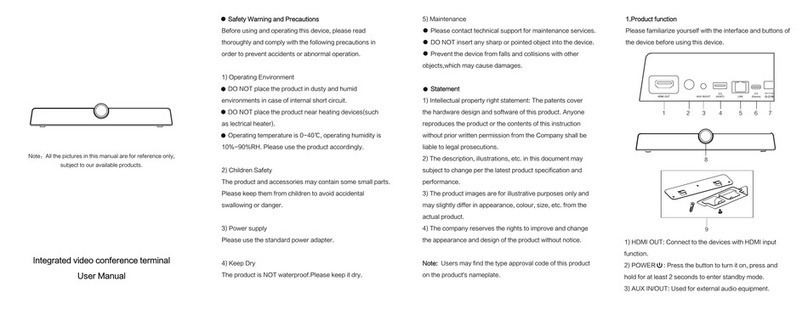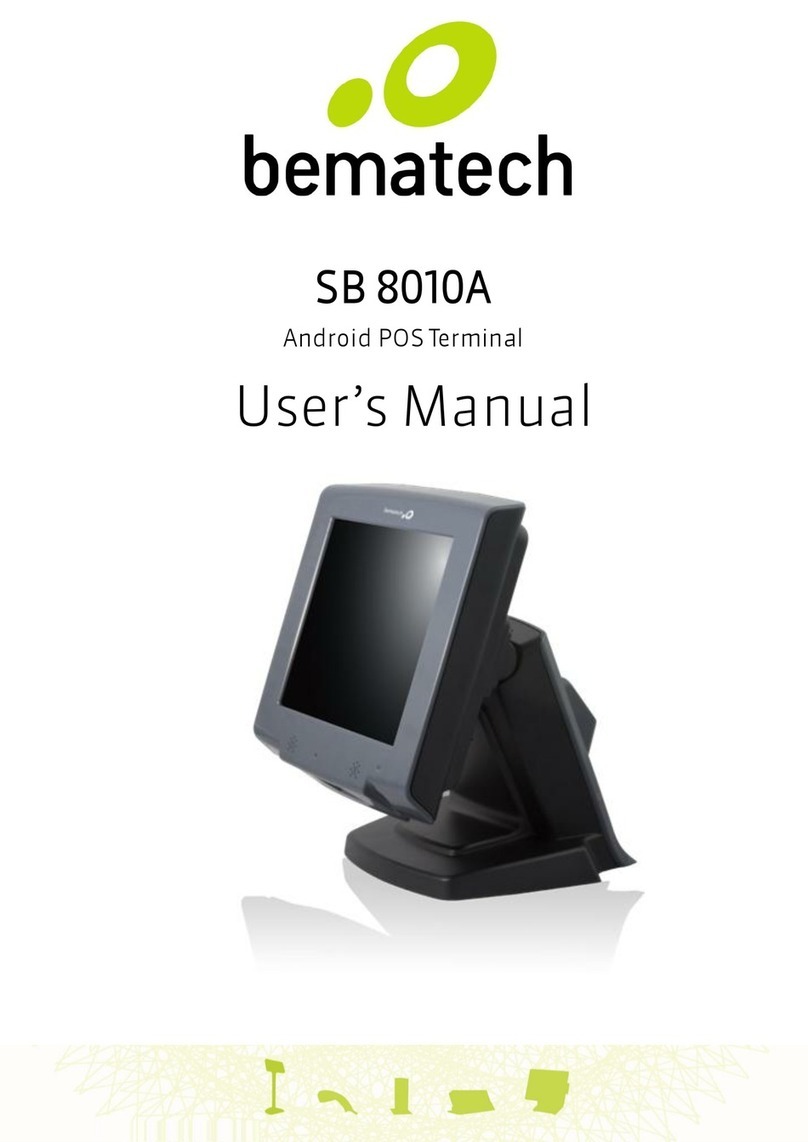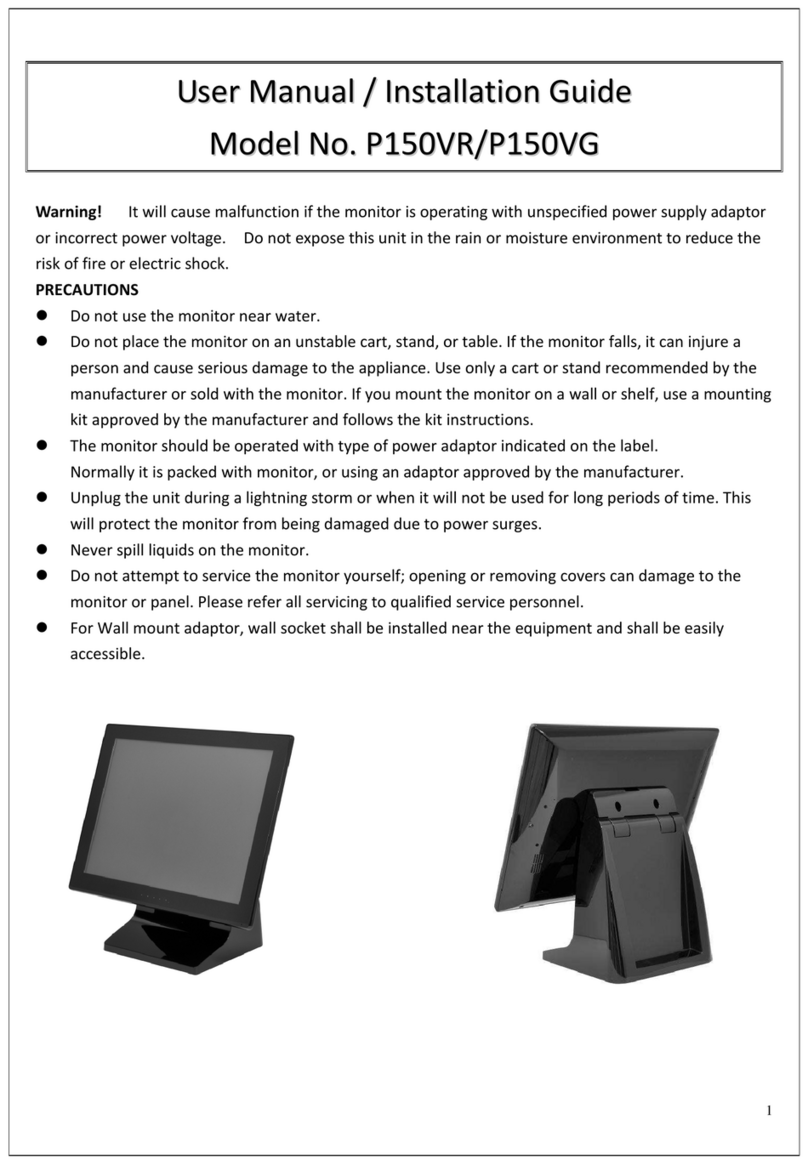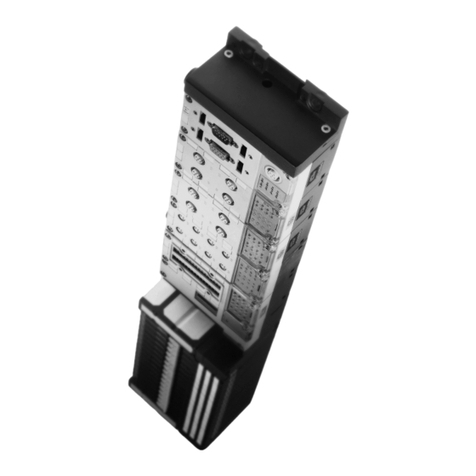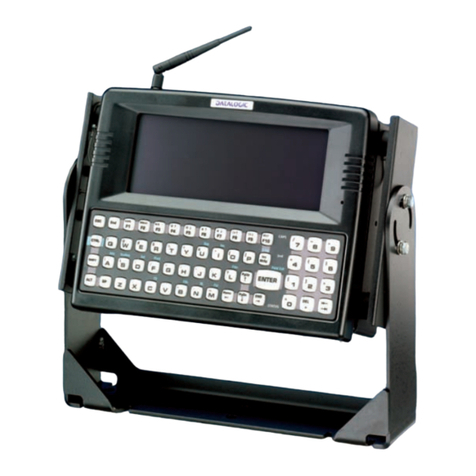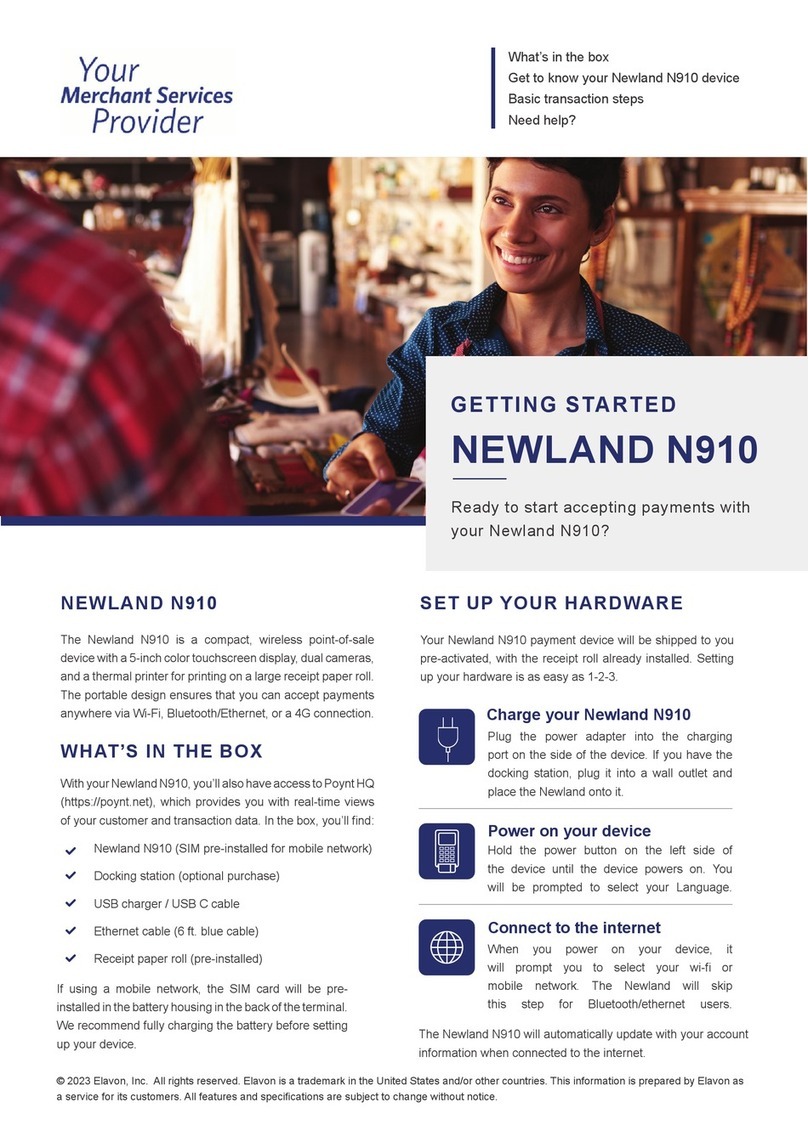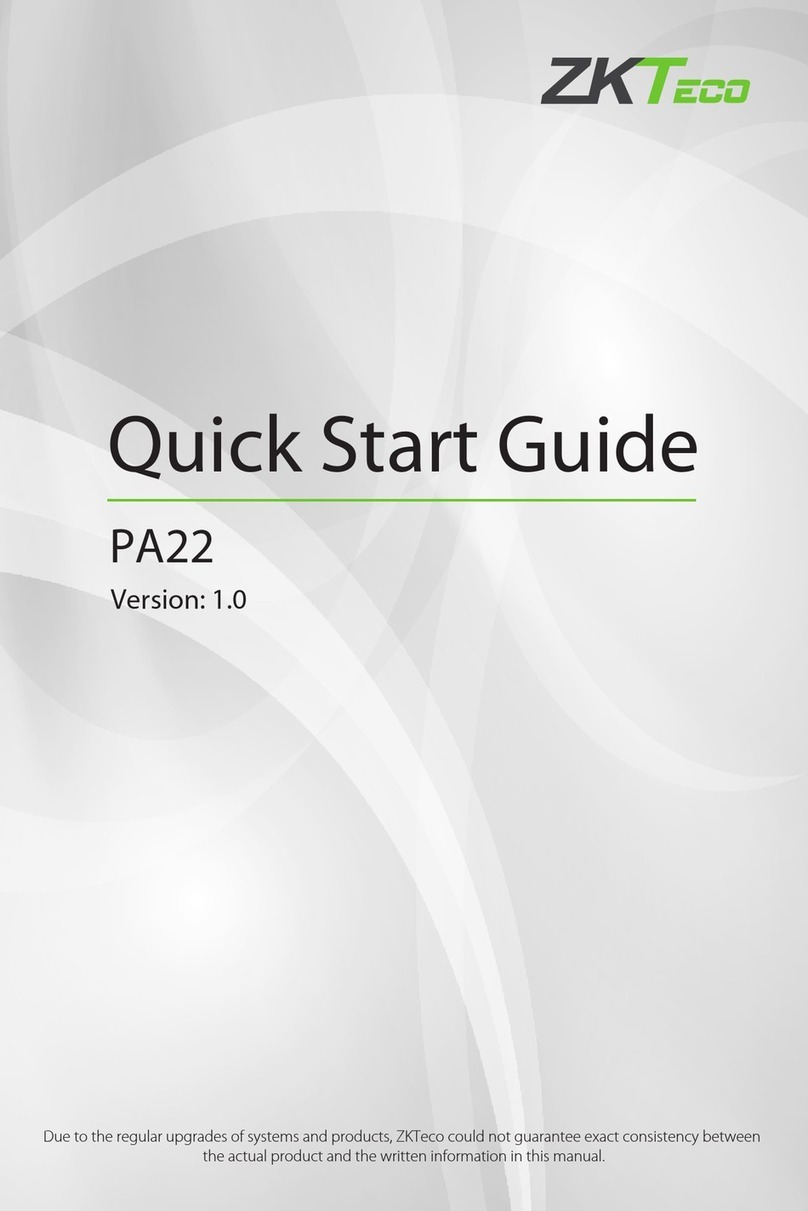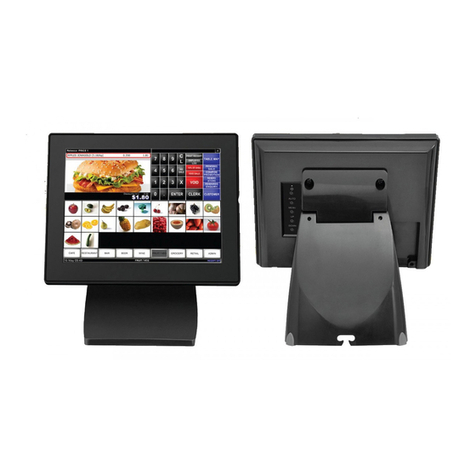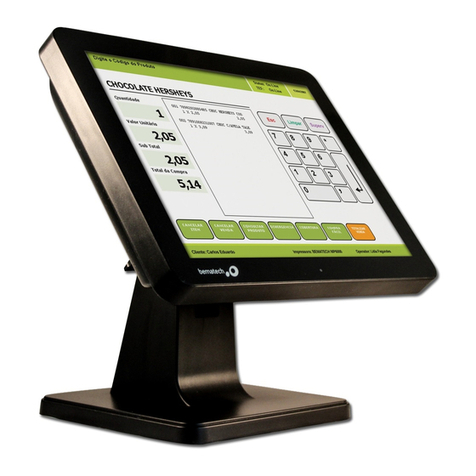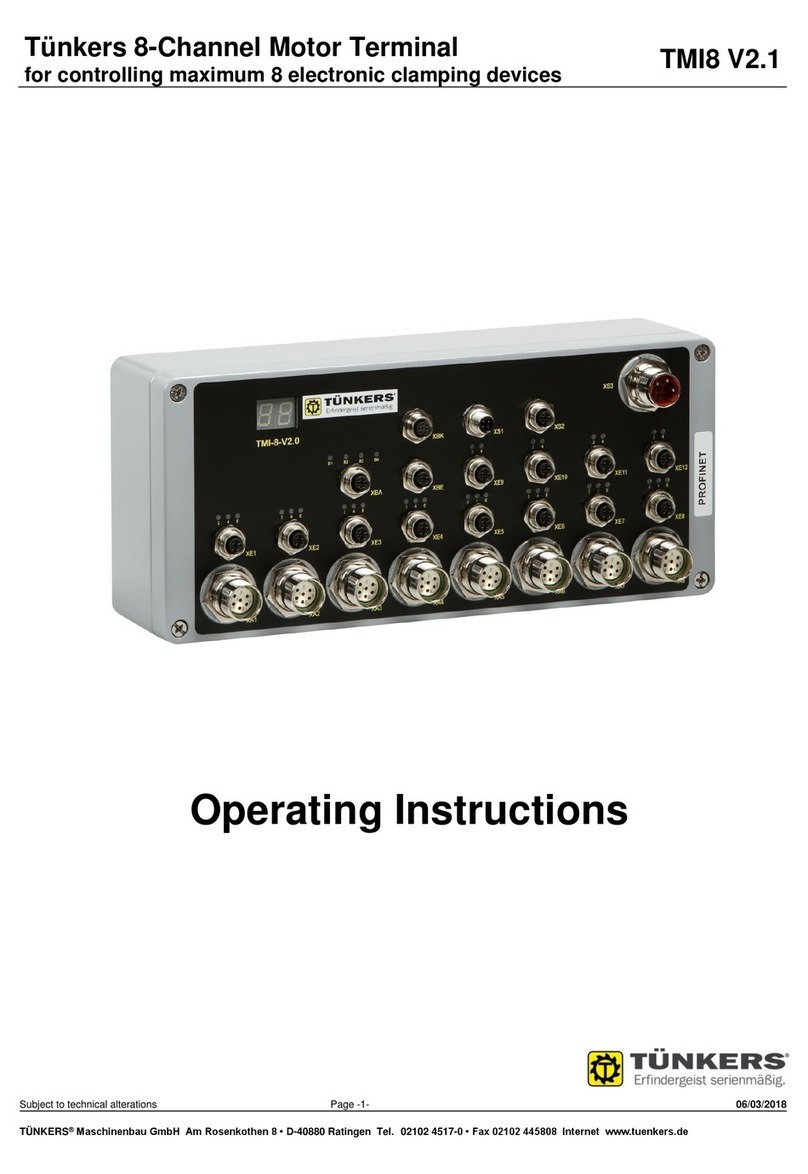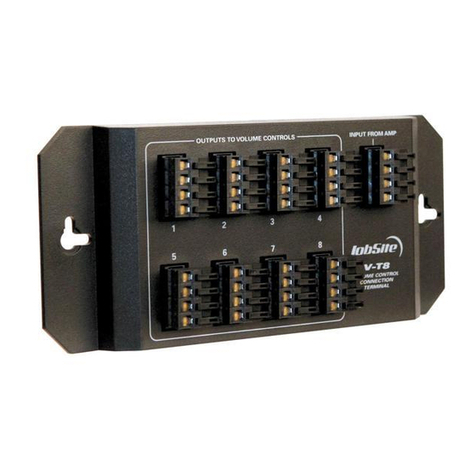Titus TFS User manual

Installation Manual FB-IOM-1.0 8-26-20
Fan Powered Terminals VAV Terminals
Receiving Inspection
After unpacking the terminal, check it for
shipping damage. If any shipping
damage is found, report it immediately
to the delivering carrier. Store units in a
clean dry location and do not stack more
than four high.
Also, inspect damper rotation of the unit
by rotating the damper by hand to check
for free movement, and ensure there is
no damage or binding of the damper. If
controls are connected to the damper,
release the manual clutch (most controls
are equipped with this) and rotate the
damper by hand. If there is any
restriction to the rotation of the damper,
contact your Titus rep and inform them
of this issue.
Caution: Do not use the inlet collar,
damper shaft, flow sensor or air
tubing as a handle to lift or move
assembly. Damage to the unit or
controls may result.
Before installation, remove fan packing
and all foreign material from the unit.
Check the blower wheel for free rotation.
Supporting the Assembly
Suspend the unit from the building
structure in a horizontal plane with the
access panels facing downward.
Do not obstruct the access panels
with support channels or straps.
One inch long sheet metal screws can
be used to penetrate the casing (see
Figure 1). Use the support method
prescribed for the rectangular duct on
the job specifications. Unit may be
equipped with optional hanging brackets
(see Figure 2). Hanger rod up to 7/16"
diameter may be used.
Any flexible conduate shall be supported
per UL 1995 section 20.12, national
electric code, and any state and local
codes having juristiction
Note: If equipped with pneumatic
controls, or unit is parallel fan type
(Model TQP or FLP), the terminal must
be mounted right side up. It must be
level within ±10 degrees of horizontal,
both parallel to the air flow and at the
right angle of air flow. The control side of
the terminal is labeled with an arrow
indicating UP.
Duct Connections
Slip each inlet duct over the inlet collar
of the terminal. Fasten and seal the
connection by the method prescribed by
the job specification. The diameter of the
inlet duct “D” in inches must be equal to
the listed size of the terminal; e.g. a duct
that actually measures 8 inches must be
fitted to a size 8 terminal. The inlet collar
of the terminal is made 1/8" smaller than
listed size in order to fit inside the duct
(see Figure 1).
Important: Do not insert duct work
inside the inlet collar of the
assembly.
Inlet duct should be installed in
accordance with SMACNA guidelines.
Rectangular discharge opening is
designed for flanged duct connections.
Fasten and seal by method prescribed
in the job specification.
If single-point electronic velocity sensor
is used, 3 to 5 inlet duct diameters of
straight duct should be provided at the
terminal inlet.
Minimum Access
Fan Powered terminals require sufficient
clearance to service the fan blower
assembly and internal actuator (if so
equipped) from the bottom of the unit,
low voltage controls from the side of the
unit, and line voltage motor controls or
electric heat section (if so equipped)
from the rear or discharge of the unit.
For bottom access panel removal, 3"
minimum vertical clearance below the
unit is required, plus sufficient horizontal
clearance to slide the access panel clear
of the bottom of the unit. Horizontal
clearance is dependent on access panel
dimensions as indicated on product
submittals.
For low voltage control enclosure
access, a minimum of 18" is
recommended. Specific control
enclosure location is indicated on
product submittals. Panel for low voltage
enclosures are removable (not hinged).
For line voltage motor controls or electric
heat control access, a minimum of 36"
should be provided to allow full opening
of hinged access doors. Specific location
is indicated on product submittals.
Important: These recommendations
do not preclude NEC or local codes
that may be applicable, which are
the responsibility of the installing
contractor.
Figure 1.
Figure 2.

FB-IOM-2.0 8-26-20
Field Wiring
All field wiring must comply with the
local codes and with the National
Electrical Code (ANSI/NFPA 70-1996).
Disconnect switches are optional
equipment. Electrical, control, and piping
diagrams are shown on the exterior
labeling or on a diagram on the inside of
the control and high voltage enclosure
covers. Unless specified otherwise in
the order write-up, all units are wired for
a single point electrical connection to the
fan and optional electrical heater. All
electric heaters if provided by TITUS are
balanced by kW per stage. The installing
electrician should rotate incoming
electric service by phase in order to help
balance the building electric load.
Caution—Electrical Requirement:
1. Provide a safety disconnect per
NEC 424-19, 20 & 21.
2. Disconnect all incoming power
before wiring or servicing unit. All
disconnect switches on the terminal
(if so equipped) should be in OFF
position while making power
connections.
3. All field wiring must be in
accordance with NEC and local
code requirements. All units with
electric heat should have copper
wires for 125% of Nameplate
Amperage.
4. Observe wiring diagram and
instructions mounted on the unit.
480 V/3 phase units require a 4th
(neutral) wire in addition to the full
sized ground wire. All units must be
grounded as required by NEC 424-
14 and 250.
Unit Labeling
Each unit will have two main labels
attached to the casing. The FAN UNIT
label (Figure 3) lists the Model Number,
Supply Voltage requirements, Motor
Horsepower, and Overcurrent Protection
requirements. The AIR FLOW label
(Figure 4) lists the Model Number, Unit
Size, Factory Order Number, and
Location. The Location (or "Tag")
indicates the engineer's planned
location for the unit to be installed.
There may be other labels attached to
the unit, as options or codes may
require.
Please read all labels on a typical
unit, before beginning installation. If
you have any questions, please contact
the local TITUS Representative for
clarification. Have the key points from
the Air Flow label available for reference
before calling.
Control Start-up, Operation
Detailed information regarding power,
accessory and communications
connections, start-up and operating
procedures for the TITUS TD-1
controller (digital) or pneumatic and
analog controls are available from your
local TITUS representative. For specific
information on controls by other
manufacturers contact that
manufacturer’s local branch or dealer.
Note: Controllers may incorporate
specific communication addresses
based on Building Management
Systems Architecture, and original
engineering drawings. Installing the
terminal in a different location than
noted on unit label may result in
excessive start-up labor.
Primary Air Damper
TFS, TQS and TQP Models:
To replace the damper blade and/or
shaft assemblies:
a. Disconnect power before servicing.
Remove control enclosure cover to
access actuator.
b. Note position of damper shaft, using
indicating arrow. Loosen linkage or
actuator collar to allow damper to
rotate freely.
c. Remove bottom access door to
expose damper assembly. Rotate
damper to fully closed position,
exposing rivets holding damper
blade to shafts.
d. Drill out rivets using 1/2” drill, rotate
damper to fully open position, and
slide damper and/or shaft
assemblies out of the duct.
e. Fit new damper and/or shaft
assemblies in place, using 1/4-20
screws with lock nuts to replace
rivets.
f. Reverse procedure in steps c, b,
and a, for assembly. When locking
down actuator linkage or collar,
position indicating arrow on damper
in the same location as before the
repair.
FLS and FLP Models:
These units use an opposed blade
damper assembly that is not repairable.
The entire assembly must be replaced.
Figure 3. FAN UNIT Label
Figure 4. AIR FLOW Label

FB-IOM-3.0 8-26-20
Standard PSC Motor Fan
Flow Adjustment
Note: Before starting fan motor, follow
steps 1 and 2.
1. Discharge ductwork should be
connected. The minimum
recommended discharge static
pressure is 0.2" wg. Be sure fan
packing is removed from units with
fan packing!
2. All foreign materials should be
removed from duct system. Filters
should be installed where required.
3. Standard PSC motors are shipped
from factory at full speed setting.
Allow motor to run-in at least 15
minutes before adjusting speed.
During initial run-in, check ductwork
connections for leaks and repair if
necessary. (Do not adjust fan speed
down if ductwork is not connected).
4. Unit is equipped with manual fan
speed control, mounted on the
bottom of the line voltage motor
enclosure or electric heat
enclosure. Turning the control
counterclockwise will reduce the fan
speed; clockwise will increase
speed.
5. Set the unit to full heating
(maximum induction). Adjust and
set remote balancing dampers, if
present. Adjust the speed control to
deliver the required CFM by
measuring air quantity at the room
outlets.
6. Proceed to primary air adjustment
procedure, detailed in control
installation information. Fan should
be re-adjusted with primary air and
ventilation air at maximum setpoint,
to insure that no supply air is
discharged at the induction port.
ECM Motor Fan Flow
Adjustment
Note: Before starting fan motor, follow
steps 1 and 2.
1. Discharge ductwork should be
connected. The minimum
recommended discharge static
pressure is 0.2" wg. Be sure fan
packing is removed from units with
fan packing!
2. All foreign materials should be
removed from duct system. Filters
should be installed where required.
3. PWM Fan Speed Controller
a. ECM motors with manual PWM
controllers are shipped from
factory at design CFM when
provided. Otherwise motors are
shipped at motor full speed
setting.
b. ECM motors shipped with remote
PWM controller require a signal from the
DDC controller to control fan speed.
(See page 4 for operating instructions
for remote pwm.)
c. Allow motor to run-in at least 15
minutes before adjusting speed.
During initial run-in, check
ductwork connections for leaks
and repair if necessary. (Do not
adjust fan speed down if
ductwork is not connected).
4. ECM unit is equipped with either a
manual control or a remote control
PWM fan speed controller, mounted
on the bottom of the line voltage
motor enclosure or electric heat
enclosure.
a. The manual PWM controller has
a screwdriver dial adjust pot and
an LED readout. The LED
display shows the flow index
when the screwdriver adjust is
turned. The flow index is a
number from 0-100 which
correlates to a CFM shown in the
PWM calibration table. Use the
screwdriver adjust to set the
CFM of the unit.
b. Remote PWM controllers require
a signal from the DDC controller
to control fan speed. An increase
in DDC voltage signal from 0-
10Vdc correlates linearly to the
0-100 flow index shown in the
PWM calibration table. A green
lamp continuously flashes to
indicate the flow index value.
Long flashes represent the tens
digit and short flashes represent
the units digit of the flow index.
5. Set the unit to full heating
(maximum induction). Adjust and
set remote balancing dampers, if
present. Adjust the speed control to
deliver the required CFM by
measuring air quantity at the room
outlets.
6. Proceed to primary air adjustment
procedure, detailed in control
installation information. Fan should
be re-adjusted with primary air and
ventilation air at maximum setpoint,
to insure that no supply air is
discharged at the induction port.
Maintenance Procedures:
Fan and Motor
Motor is equipped with permanently
lubricated bearings. Inspect fan and
motor assembly for accumulation of dust
and dirt as required by operating
environment. Clean as necessary.
If fan motor does not run:
a. Free rotation of blower wheel fan
packing removed. Freight or
installation damage.
b. Check for proper unit power
Disconnects should be ON .Check
optional fusing.
c. Check for proper control signal, P/E
switch setting, proper air control 24
Vac at fan contactor, coil energized.
If fan motor runs, excessive noise:
a. Clearance problems on blower. All
components securely attached.
b. Verify integrity of ductwork. Leaks
or loose connections. Rattling
diffusers or balancing dampers.
c. Maximum CFM too high, or
discharge static pressure too low
If fan motor runs, insufficient air flow:
a. Check for ductwork restrictions.
Dirty air filters. Clogged water coils.
b. Re-adjust fan speed control.
c. Discharge static pressure too high.
If repair or replacement is required:
Motor and fan should be removed as an
assembly. Disconnect all power before
servicing. Remove the hex nuts from the
mounting lugs holding the fan assembly
to the discharge panel, and lower the
assembly. For model TFS, lift the
motor / blower assembly to release the
tabs from the discharge panel, then
lower the assembly. Do not allow
assembly to hang from wiring.
If removing motor from blower, first
loosen the set screw holding the blower
wheel to the motor shaft. Remove the
three screws holding motor to the fan
housing, and slide motor and fan
housing apart.
Reverse the procedure for assembly.
Note: Over tightening motor mounting
screws may crush isolation bushings,
causing excessive fan noise.
Optional Water Coil
Cleaning
In most cases, the supply side of the
water coil (optional) can be cleaned by
removing the bottom access door and
cleaning the coil face through the open
space between the motor / blower
assembly and the unit casing.
If more space is desired to clean the
water coil, the motor / blower assembly
may be removed and reinstalled as
described above.

FB-IOM-4.0 8-26-20
Manual / Unit PWM Signal Interface Board
The Manual PWM interface board allows accurate manual
adjustment and monitor of fan with the GE Electric ECM
Motor.
The Manual interface board features a 4 digit LED
numerical display to allow easy reading in dark spaces.
Watch the display and set the flow index with a screwdriver
adjust. Twenty seconds later, the display shows the
motor RPM. Then, the display periodically alternates
between the flow index and motor RPM.
Operation
ECM motors configured for Vspd operation are
factory configured for external torque or airflow
adjustment. A numerical flow index accurately adjusts the
fan to the desired torque or airflow. The flow index is a
number from 0-100 having a linear relationship to the
minimum to maximum torque or airflow range specified by
Titus. Refer to the fan specifications, data and charts to
convert the flow index to torque or mass airflow.
The Manual PWM interface board allows local on/off and
fan airflow adjustment. Rotating a single screwdriver
adjuster changes the variable output signal to the motor
from off to full output. While rotating the adjuster, a
numerical flow index is locked on the illuminated
numerical display. After adjustment, the display
shows fan RPM.
ECM Overview and Setup
Remote PWM Signal Interface Board Details
The remote interface allows industry standard 0-10Vdc
automation signals to adjust and monitor General Electric’s
ECM Motor.
The interface board provides remote adjustment of the
ECM output from 0% to 100% of the programmed control
range. A signal lamp on the control continuously flashes out
the flow index2. Instruments are not required to read the
flow index. A 0-10Vdc signal connects RPM to the
automation control. Jumpers allow the Interface to be
configured for 0-10Vdc automation signal, 2-10Vdc
automation signal, and manual/override control. The
interface can also be used for stand-alone manual control.
The green lamp continuously indicates the flow index. After
a pause, the lamp flashes out the tens digit, then the units
digit of a number between 1 and 99. Long flashes represent
the tens digit, and short flashes represent the units digit.
For example, a flow index of 23 flashes two longs, then
three shorts.
Two extra long flashes indicate a flow index of 0. An extra
long flash and ten short flashes indicates a flow index of
100. The lamp flashes the signal that was present when the
flash sequence started.
Turning Adjust controls the ECM motor to the manually
adjusted setting. The manual setting has authority for 15
minutes.Set the unit to full heating (maximum induction).
Adjust and set remote balancing dampers, if present. Adjust
the speed control to deliver the required CFM by measuring
air quantity at the room outlets.

ECM Overview and Setup
DDC Control - Air Balance
If the DDC Controller signal is already installed, air
balance can be achieved using the DDC Controller
software tools. Please notice that a control signal less than
0.2Vdc may put the interface board into manual override.
Avoid setting the DDC signal to less than 0.2Vdc.
Cycle power ON/OFF for faster lockout removal.
Manual Air Balance
The interface board can be manually adjusted before the
DDC Controller signal is available. The balancer’s manual
adjustment has authority until automation is connected.
Air Balancer
1. Use Adjust to set the air flow. This adjustment will have
authority for at least 15 minutes.
2. Read the flashing green light and record the flow index
on the air balance report.
DDC Integrator
1. Set the Signal to 0Vdc to invoke manual override.
2. Record the RPM on the air balance report.
3. Enter the flow index the air balancer entered on the air
balance report.
4. Observe the RPM is at or near the RPM observed in
step 2.
5. Cycle the motor on/off 5 times. This clears the manual
override function unless the “M” jumper is in
place.
Turning Adjust potentiometer locks out the BAS
signal for 15 minutes
WARNING
Remote PWM Signal Interface Board Details
Jumpers
M – Enables SET SPEED potentiometer
manual override (bypassed when
automation SIGNAL exceeds 0.2VDC).
S – Enables SET SPEED potentiometer reversal (used
when the set speed potentiometer is going to be adjusted
from the component side of the board).
P – Enables hysteresis option
With P Jumper: Configures the SIGNAL input to a 2-10v
range; corresponding to 0-100% motor speed request.
Signal with
“P” Jumper Out
Signal with
“P” Jumper In
Input / Output Control Signals
Input
Power Supply: 18-30 VAC, 60Hz
SIGNAL & COMMON: 0-10VDC = 0-100% PWM request
ECM supplied feedback: 5VDC (motor at rest or not
connected)
Output
PWM supplied to ECM: 18VDC (10mA max)
ON/OFF supplied to ECM: 18VDC (10mA max)
RPM & COMMON: 0-10VDC (5mA max) = 0-2000 RPM
(10 RPM increments)
FB-IOM-5.0 8-26-20
This manual suits for next models
4
Table of contents
Other Titus Touch Terminal manuals

